Facilities
CET has over $12 million in advanced technical research infrastructure to support the development of clean energy technologies.
Researchers come from all over the world to use our facilities. If you are interested in a particular piece of equipment or working with us, contact our office.
-
Laser diagnostic systems and research laboratories
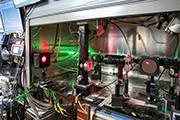
Our laser facilities are among the most advanced in Australia.
We have numerous class III and IV lasers and expertise in most current laser techniques, including particle image velocimetry (PIV), laser doppler velocimetry (LDV), planar nephelometry, laser sheet drop-sizing (LSD), two-line atomic fluorescence (TLAF), laser induced incandescence (LII) and planar laser induced fluorescence (PLIF).
-
Micro-algae cultivation and processing facilities
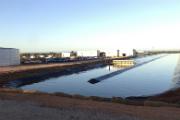
The micro-algae cultivation and processing facilities at the University of Adelaide have allowed CET scientists to produce green crude from marine microalgae and scale the technology to commercialisation (Muradel Pty Ltd). Facilities include culture facilities (i.e. mixers, shakers, growth cabinets and various bioreactors) and various strains of microalgae and cyanobacteria.
-
Photocatalysis Laboratory
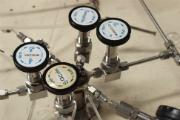
This laboratory is used primarily to develop novel catalysts (sub-nanometre scale metal catalysts) for processes like the solar-induced, photocatalytic conversion of carbon dioxide (CO2) and water (H2O) into useful and storable hydrocarbons, such as methane (natural gas) – a type of artificial photosynthesis.
-
Wind tunnel
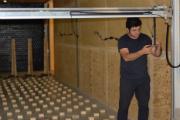
CET’s wind tunnel is the second largest in Australia. It’s been built to test and develop wind turbines and cater for specialist capability in buildings, aerospace and sports engineering. The wind tunnel is unique within Australia and housed in a dedicated building at the Thebarton Research Precinct.
The tunnel has different working sections to test:
- wind turbines
- aeronautical and aerospace applications
- automotive applications
- environmental aerodynamics
Our team’s facilities are also available for commercial consultancies.
-
Biomass and Coal Research Laboratory
The South Australian Coal Research Laboratory (SACRL) continues the work of the CRC for Clean Power from Lignite, particularly in relation to South Australian low-rank coals. SACRL has a dedicated laboratory building at the Thebarton Research Park that holds:
- analytical facilities
- bomb calorimetry
- CHN elemental analysis
- thermo-gravimetric analysis
- differential scanning calorimetry
- gas composition analysis via gas chromatography
- fourier transform infrared spectroscopy
- a small bench-scale, high-temperature tube reactor
- a small pilot-scale circulating fluidised-bed reactor with a nominal throughput of 10 kg/hr
-
Solar simulation facilities
Solid State Solar Thermal Simulator (SSSTS)
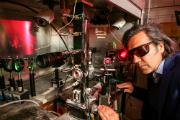
World first solid state solar thermal simulator (SSSTS) integrated with a fibre optical delivery head.
Associate Professor Zeyad Alwahabi and his team at CET have built the world first solid-state Solar Thermal Simulator. The new SSSTS delivers 30,000 suns with near top-hat profile. The fibre optical delivery feature enables the ease of direction onto a suitable target, without the need of large ellipsoidal reflectors usually employed for the conventional arc solar simulators. The electro-power efficiency was evaluated to be 55%. The maximum value of uniform radiation flux exceeds 36.6MWm-2, which is relevant to solar thermal applications that are not wavelength-sensitive or where narrow line-width is desirable.
Using this simulator, we manage to heat by radiation process micron-size-particles and then directly measure their temperature as a function of radiation flux. The unique characteristics of the SSSTS namely, the uniformity, high power flux, efficiency, ease of delivery, and precise control of the level of the radiation flux responds to the current demands in solar thermal research for example chemical processing including mineral and gasification.
Solar Simulator Facility
A three lamp solar simulator is under construction by Dr Woei Saw. This simulator consists of three metal halide discharge arc lamps, HMI 6000, with an electrode separation of 23 mm, which will be able to provide a radiant power of ~5kW. The spectral irradiance of the metal halide lamp is a closer mater to that of the sun over the range of 350-900 nm, as compared to the xenon arc lamp that has been used commonly in other solar simulators. Contact Dr Woei Saw.
-
Energy Storage Testing Facility
The mobile Australian Energy Storage Platform has been designed by CET scientists to help test energy storage systems under real and simulated grid and off-grid conditions. The interdisciplinary team led by Associate Professor Nesimi Ertugrul have mapped the electrical and mechanical design specifications and worked with industry to find out more about their specific test requirements to help inform its design and development. Several components are already in place and the platform hardware is expected to be fully complete in 2016. Control and data logging software is also currently under development for AusStoragePlatform.
